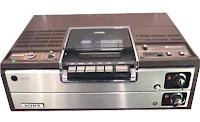We were recently involved in a pitch to a hotel for an
in-room entertainment system that went from straight forward to utterly confusing
within two rounds of presentations and demonstrations by all invited vendor
parties which ended up paralysing the hotel’s decision making process. What
happened? The short answer is: technology chaos.
The problem hoteliers are facing is how to make sense of a
today’s Information Systems which are increasingly a chaotic mix of
applications, interfaces and operating systems with their respective advantages
and disadvantages and are by no means compatible. So which one to go for? Which
one is flexible enough to serve hotels’ increasingly complex and continuously changing
operating environments?
The answer is surprisingly easy to find with a little
research around current mainstream technologies. But in order to do that, let’s define what
mainstream is first: in short, it’s integration capability that results in mass
adoption. Similar to Darwin’s evolutionary theory, a technology’s trajectory is
largely determined by how much it is able to adapt to changing circumstances,
or in other words, its capability to integrate with new and improved technology
variations as they appear.
 |
| Pushed to the sidelines: Betamax |
Of course, technology is not some organism and moves in much
faster and more haphazard ways as everyone who remembers the Beta vs VHS
technology battle can attest. It can be wholly unpredictable at the cutting
edge – think the phenomenal and utterly unpredicted success of the iPad – and
entirely predictable at the tail end of consumer adoption (anyone doubted the
success of iPad 2 and 3?).
Which brings us back to how we should determine what is and
isn’t mainstream technology. There are two parts here that need to work in sync:
the front end, or user interface, and the backend, or operating system. And
looking at adoption levels of both gives a pretty good insight into what
‘mainstream’ constitutes at this point in time.
At the user interface, the performance of tasks is commonly
managed by application software. While application software has always been the
link between the operating system and the user (think accounting
software, office suites, graphics software etc), it’s mobile Apps
that really changed everything. And when Apple opened its platform for app
developers and then the AppStore to help iPhone users turn their phone into a
mini computer full of apps, that’s when the platform truly became mainstream.
Now, as Apple says so aptly on their website, there’s an app for everything.
Apple’s application store sells the most apps (not a shocker), carrying over
225,000, with more than 4 billion apps downloaded from Apple alone (the second
largest app market – Google’s – doesn’t release comparable figures).
So here it is then: the more open for integration the platform, the more app developers it will attract, which in turn will draw more people to buy the mobile device running that particular platform. The future winners of the technology evolution are likely to be decided by just this openness of integration. That’s what’s called mainstream.
So here it is then: the more open for integration the platform, the more app developers it will attract, which in turn will draw more people to buy the mobile device running that particular platform. The future winners of the technology evolution are likely to be decided by just this openness of integration. That’s what’s called mainstream.
Looking at the current canon of technologies that are
dominating the enterprise and consumer landscapes, Android and Apple, or iOS,
appear to be winning the race to becoming the dominant system operating
technology standard, specifically for mobile devices, which are increasingly
dominating all walks of life.
All of this also matters to hotels of course. Technology as
a whole is increasingly pivotal for hotels on all levels, from interior room
design to revenue management, so betting on the wrong technology horse may
result in some nasty injuries later.
As an example, let’s look at some technologies that are
commonly going head to head in in-room technology systems these days: STB-based
systems, and those based on thin client-integrated technologies such as XBMC.
If you apply the mainstream test to both, it’s pretty
clear that STB is as bona fide mainstream as you can get. XBMC, on the other
hand, is a niche product that is used by a handful of customers, has very
limited integration compatibility and is consequently very likely to have a
finite development path. The latest STBs today are typically based on an HTML5
front end client. XBMC on the other hand is based on their own proprietary thin
client, which provides an optimised front end performance but at the considerable
price of integration and customisation flexibility. And as STB performance improves,
even the front end performance advantage of a thin client will vanish.
 |
| Say hello and wave goodbye: HTML5 has regaled Flash to history |
The fact that Adobe sacrificed Flash for HTML5 is an
early indicator that HTML5 will prevail and push most others (including XBMC)
that have a boutique ecosystem to support its ongoing evolution to the
sidelines.
While the current chaos of technology advancements
makes it considerably harder than just a few years ago to predict what the next
breakthrough consumer device, entertainment delivery platform or social
obsession will be, it is clear that for the foreseeable future the delivery mode
will be Apps, based on open technologies and accepted by the mass market. So
hotels should ensure they decide on a platform that meets these attributes.